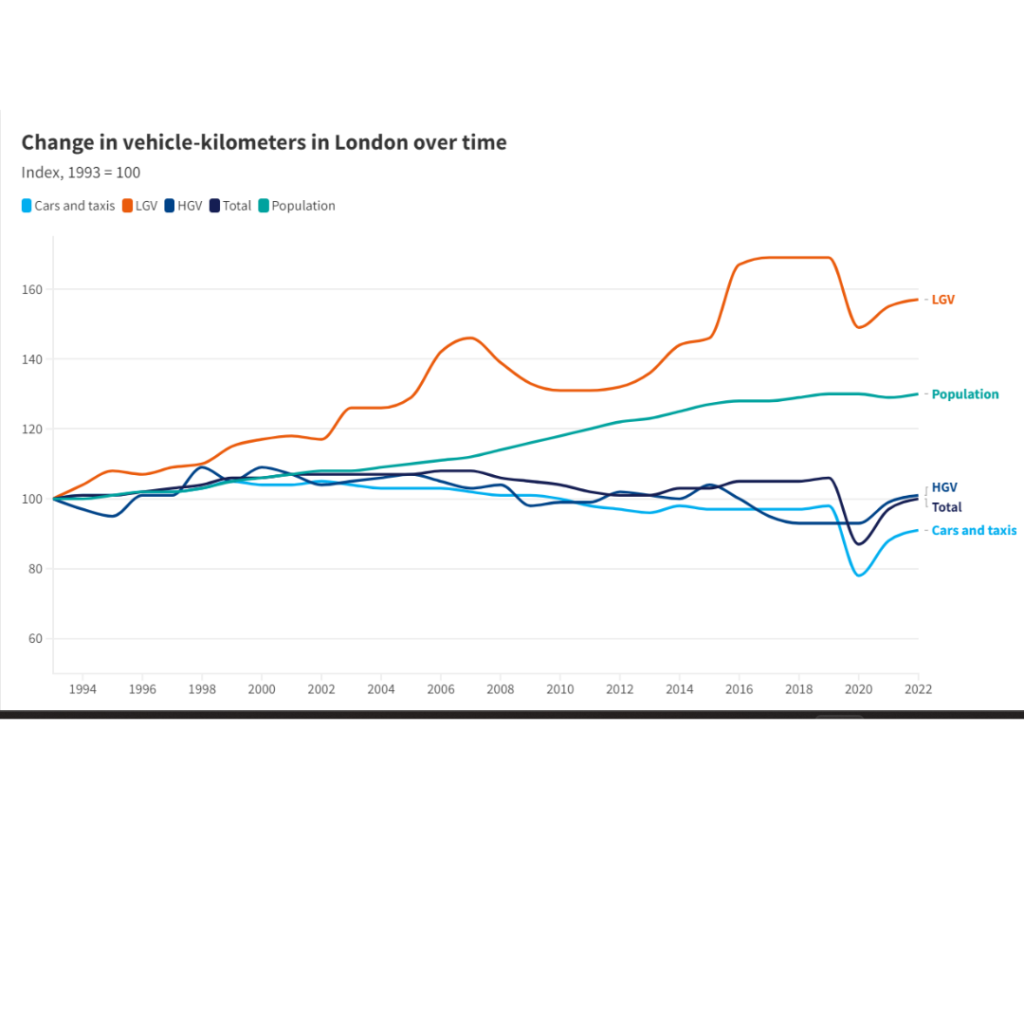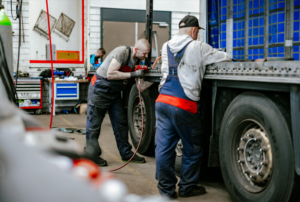A new study from Clean Cities shows that if cities transform how goods move around our cities, we can expect a significant impact on cutting carbon emissions. Urban freight currently makes up around 25% of all carbon emissions from city road transport (see graph). It has increased in recent years as more people shop online, and population and economic growth continue.
The new (E)Mission: Zero modelling study looks at what five cities—Greater Manchester, Milan, Brussels, Madrid, and Warsaw—should do to reduce emissions. It shows that in all the cities, replacing diesel van deliveries with electric vans and trucks as well as cargo bikes, re-organising delivery hubs, and consolidating deliveries will help reduce carbon emissions from freight.
The figures show that, for example, in Milan, the city could cut greenhouse gas emissions from freight by more than 80% – from 185 kt CO2e per year in 2019 to just 23 kt CO2e per year, despite predicted growing demand. The city would need to significantly expand its cargo bike delivery system and reduce the number of deliveries made by light delivery vans. If this were accompanied by switching 74% of vans to electric vans, it would almost offset the expected growth in emissions from urban freight.
We need everything together
The Clean Cities (E)Mission: Zero study is the first time researchers have mapped out what cities should do to achieve zero emissions from urban transport within the next ten years. The findings suggest that achieving these ambitious targets will require maximum effort on all fronts, but crucially, we do not need any new technologies to get there.
The most effective policies will be greening urban logistics fleets, introducing low- or zero-emission zones, electrifying the public transport network, expanding cycling infrastructure, and introducing traffic-calming measures. Milan and Madrid could expect a reduction in emissions of almost 95% by 2030 if leaders choose a suite of these ambitious policies. Recently, the EU Commission stated that emissions from transport need to be reduced by 84% by 2040 if we are to meet Net Zero by 2050.
Win-win
In addition to reducing carbon emissions, there are a range of co-benefits associated with decarbonisation. The Clean Cities models suggest that all cities will drastically reduce air pollution. In Manchester, for example, road transport emissions of one of the most harmful pollutants, Nitrogen oxide (NOx), will be reduced by 91% in the most ambitious scenario, meaning that deaths from conditions linked to air pollution will be reduced. Fatalities of cyclists in road collisions would also reduce by 81% per kilometre cycled.
Barbara Stoll, Senior Director of the Clean Cities Campaign, said: ‘This first-of-its-kind analysis shows that we can absolutely create liveable, healthy and climate-friendly cities without reinventing the wheel. The solutions exist for city leaders to act now, and if they do, they will cut air pollution, reduce fuel bills and free up more space for communities to connect. This is a real ‘Yes, we can’ moment for cities.’




